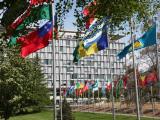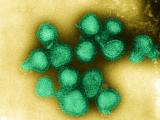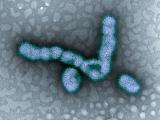Apr 2, 2010 (CIDRAP News) – The World Health Organization (WHO) yesterday reported moderately active pandemic influenza activity in parts of the tropical regions of Asia, the Americas, and Africa, as well as influenza B activity in much of East Asia.
Seasonal influenza A (H3N2) is being detected in very small numbers in parts of Asia, as well as Australia, which is just about to enter its flu season, the WHO said in its weekly update. Countries reporting increased H1N1 levels include Thailand, Bangladesh, Rwanda, Tanzania, Guatemala, Nicaragua, El Salvador, Panama, Brazil, Peru, and Bolivia.
In Africa, the pandemic virus is most active in western countries, but is being seen in some areas of East Africa, particularly Rwanda and Tanzania. Though the pandemic virus is dominant in Africa, laboratories are also identifying small number of seasonal H3N2 and H1N1, as well as influenza B.
The most active area of pandemic flu transmission in the tropical zone of the Americas is Brazil, especially in the northern part of the country. In Mexico, several states reported localized pandemic flu transmission throughout March, but activity didn't reach peak levels seen in the fall.
Although flu-like illness has decreased in China, more than 85% of flu viruses detected in recent weeks have been type B, the WHO reported. Type B viruses are circulating at low levels in many other countries of East and Southeast Asia.
Three European countries—Latvia, Lithuania, and Bulgaria—reported increasing respiratory disease activity, though not all of it is pandemic flu. Increased circulation of influenza B has been reported in Siberian and far eastern regions of the Russian Federation, and the virus is the dominant strain in Italy and Sweden.
As of Mar 23, more than 213 countries and territories have reported lab-confirmed pandemic flu cases. Countries have reported 17,483 pandemic flu deaths to the WHO, though that number is thought to greatly underestimate the actual number.
See also:



















